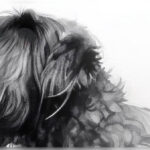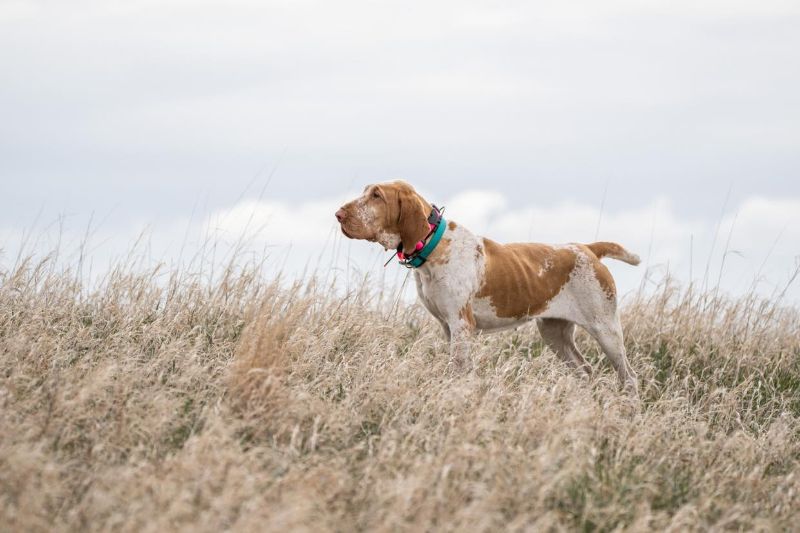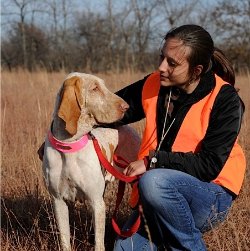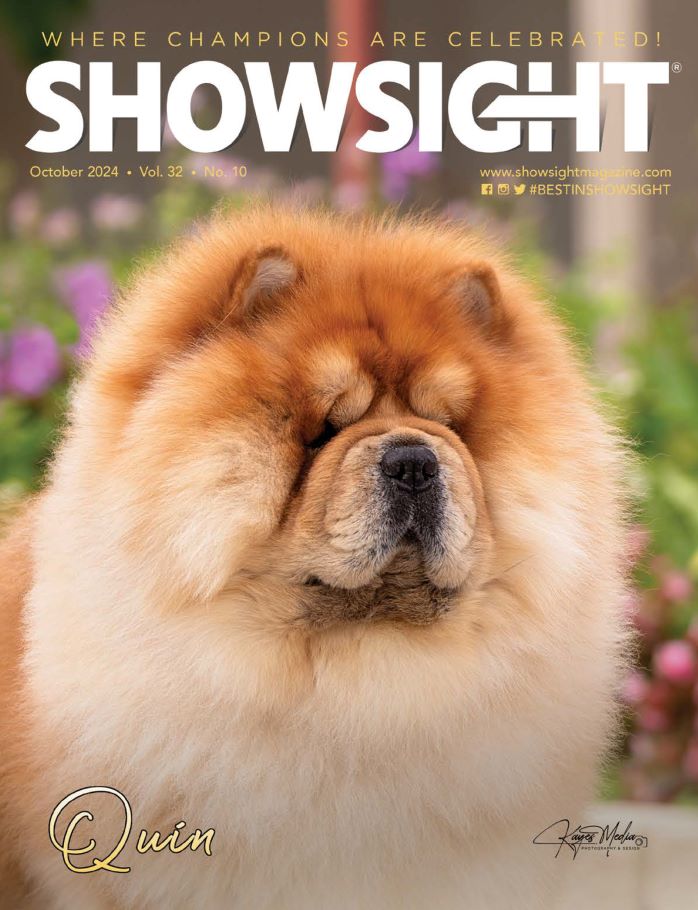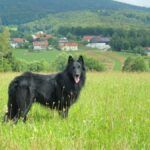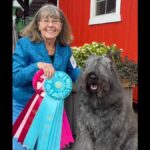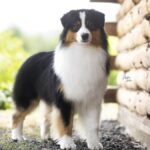The Bracco Italiano was introduced in a big way to the American public at the 2023 Westminster Kennel Club Dog Show. This was the first time for many people seeing the breed on their screens. It was followed by the influx of: What is it? How do you say that? Broh-ko? Where can I buy one? How much do they cost?
The Bracco Italiano is a versatile pointing dog. They belong to the “hunt, point, retrieve” class of dogs and are truly a jack of all trades. Their appearance is striking as a large, strong breed with a kind expression of chiseling under the eyes. They have long, soft ears that reach their nose and a smooth, glossy coat that is white with bright orange or warm brown spots. The head planes are divergent (“down-faced”), which allows them to catch scent from a distance when trotting in the field. The breed has a fast, extended trot. A Bracco should be able to go from a gallop to a trot and not lose speed.
While the Bracco Italiano was the 200th breed to be recognized by the American Kennel Club and has the shine of a new toy to dog fanciers across the United States, it is likely the oldest continental pointing breed in existence. The word bracco stems from the Proto-Indo-European root *bhrh1g-ro meaning to scent or smell. The breed’s name is Bracco Italiano, and the plural is Bracchi Italiani. The exact origin of the breed has been lost to time, but the earliest forms of this breed likely pre-dated the Roman settlement of the Italian peninsula.
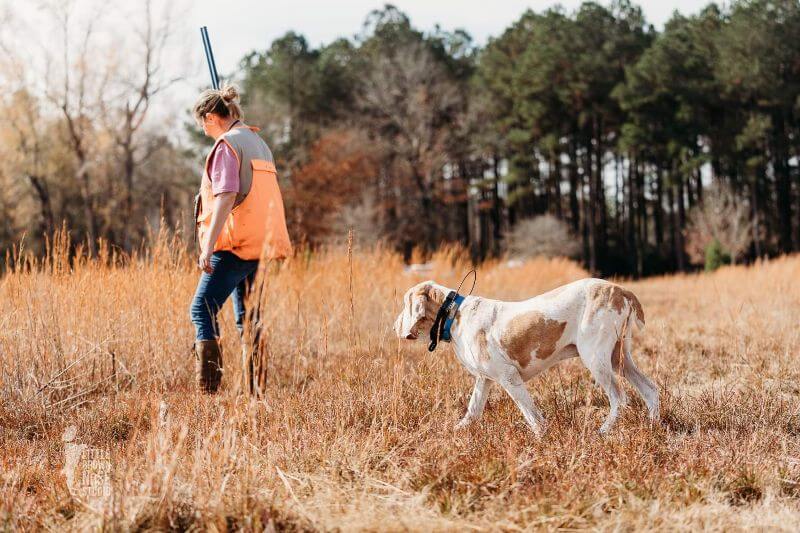
The Bracco Italiano as we know it today was well established by at least the early thirteenth century in Italy. They were treasured by the aristocracy and traded among the nobility. Bracchi were frequently used as part of property sales, war treatises, and feudal patronage throughout the Middle Ages and the Renaissance. During the breed’s early history, they hunted birds and small game alongside hawks. They were also known as the bracchi da rete (bracchi of the net) due to the practice of throwing a net over a covey of birds. It was common in those days for Bracchi to be sold with a hawk or a net.
The breed’s popularity peaked during the Renaissance. The breed appeared in Dante Alighieri’s Divine Comedy in 1321. Countless poems and songs described the favorite Italian pastime of hunting quail with a hawk and a Bracco. The breed is seen in the paintings and frescoes of the time. Arguably the two most powerful Italian dynasties during the Renaissance—the Medici and Gonzaga families—were passionate hunters and breeders of Bracchi and falcons. Their influence helped to spread this breed across the Old World.
The Bracco Italiano was exported to other countries where similar breeds did not yet exist. The most notable was the breed’s influence in France. In 1480, a white Bracco Italiano bitch named “Baude” was introduced to the royal hunting kennels in France. Her offspring would develop into several breeds, including the King’s White Hounds (Chien Blanc du Roy), Greffiers, and Bauds. The term Baud was used to describe white hunting dogs in France until the 1840s. The Bracco Italiano was also introduced into Spain in the sixteenth century and again in the second half of the eighteenth century. The breed was used to develop the Gorgas Pointer, which was common in the eastern provinces of Spain for roughly a century but went extinct in the early 1900s.
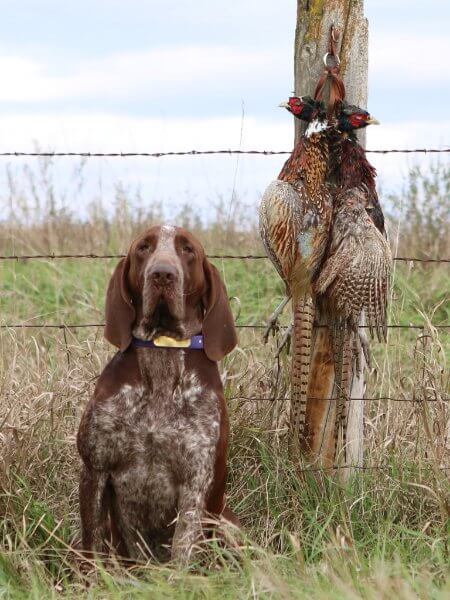
By the early 1600s, the breed had developed into two distinct varieties. The Piedmontese Pointer was orange and white in color. They were smaller and lighter in body structure, due to their use in the mountainous terrain of Piedmont. The Lombard Pointer was heavier, taller, and the color was brown and white. The Lombard dogs were used more in the lowlands and were a trotting dog. There was significant variability and flexibility within the breed types.
After the introduction of the English Pointer and setters to Italy in the 1800s, the Bracco Italiano faced a sharp decline. The breed was not as fast or flashy as the English breeds and they were frequently cross-bred with other breeds to create mixes such as the “Bracco-Pointer.” By the end of the nineteenth century, the breed faced extinction. With dedication and thoughtful breeding by a few select individuals, notably Ferdinando Delor de Ferrabouc, the breed was revived. To maintain genetic diversity, the Piedmontese and Lombard pointers were unified. The Italian breed club, Societa Amatori Bracco Italiano, was formed in 1949 and the conformation standard was published the same year.
Throughout all its history, the Bracco Italiano has been celebrated as a hunting dog. The goal of the Bracco Italiano Club of America is to maintain the cultural and functional heritage of this breed. These dogs are happiest when they can do their intended work as a bird dog. They are a large, energetic breed that thrives when they have frequent opportunities to hunt. They are not appropriate for apartment living and do best when they have a large yard. Potential owners must understand that this is a hunting dog first and foremost. Anyone interested in adding a Bracco to their family should meet the breed in person and spend time with these dogs before committing to a puppy.
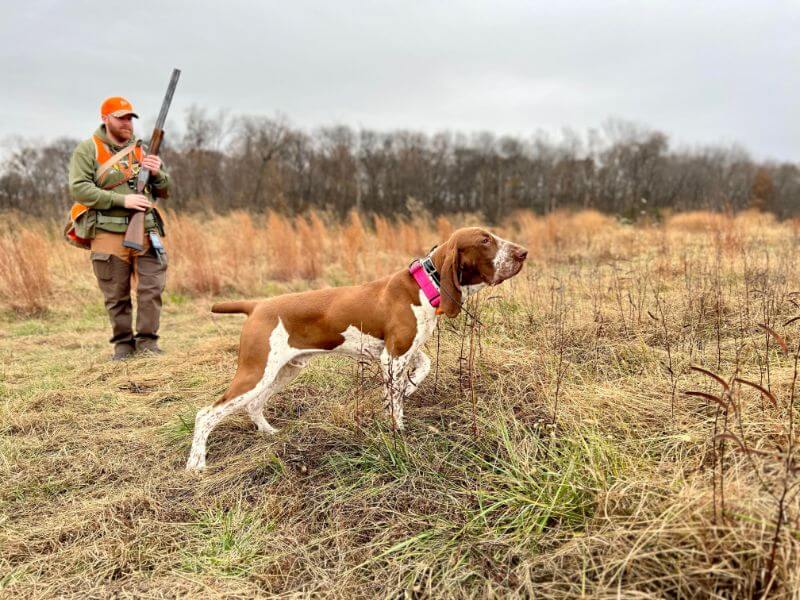
New owners are strongly encouraged to invest time in their dog’s natural hunting ability. The Bracco Italiano Club of America provides a list of mentors to help new owners get their dogs started in the field. From weekend fun hunts to hunt tests and field trials, or back country wild bird hunts—all of these are excellent opportunities for the Bracco to live its best life. These dogs are happiest when they can hunt. The breed club encourages all breeding dogs to be worked in the field.
The breed is unique in its hunting style. They have a fast, extended trot in the field and hold their head high above the topline. They are described as being very thoughtful in the field and consider the hunt a mental process. While a hard, fast point is valued in some breeds, the Bracco Italiano should establish a point more gently. This is called the filata. The dog should detect a scent and gradually slow his steps, with the head held high. The final steps of the filata are often very slow. Only then will the dog become completely motionless and establish point, with the tail held near the horizontal. This is quite different from the English and German pointers, which work at a fast gallop and stop hard and fast on point.
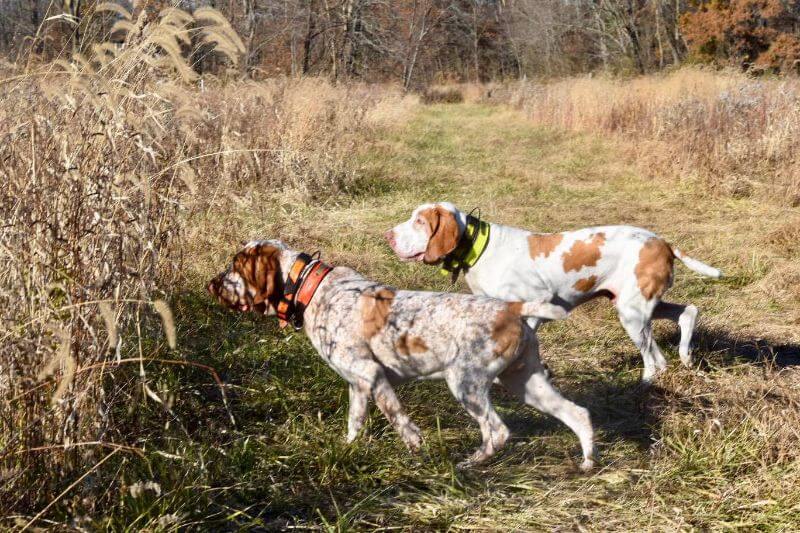
The appearance of this breed—with its powerful bone, soft wrinkles around the face, and long ears—is rather unique in the Sporting Group. The conformation of the Bracco is directly tied to its history and function. They are a large and strong dog, reaching 21 to 27 inches at the withers. The breed should have a well-angled (105-degree) shoulder that is freely moving to allow for adequate reach in the trot.
The long pelvis rests at 30 degrees from the horizontal to permit the most functional drive from the hindquarters. To not create wasted movement, the stifle is moderately angulated at 135 degrees. The topline consists of two lines (one from the withers to mid-back and the second slightly arched to the rump), which allows flexibility in movement. They often over-reach when trotting so that the hind foot will move in front of the front foot. Each of these small details in the breed standard correlates to the breed’s function as a versatile Sporting dog.
Understanding the history and function of the Bracco Italiano is vital to appreciating its conformation. This is a hunting breed. Every decision in the show ring should take the breed’s function into consideration. The magnificence of the Bracco Italiano is a culmination of their unique conformation, thoughtfulness and calm demeanor, hunting ability, and fast trot. If any one of these vital attributes is lost, the breed will be lost. Breeders, owners, and judges will have to work together to ensure that the “pieces of the puzzle” do not become divided and can remain harmonious together as they have for over a thousand years.
